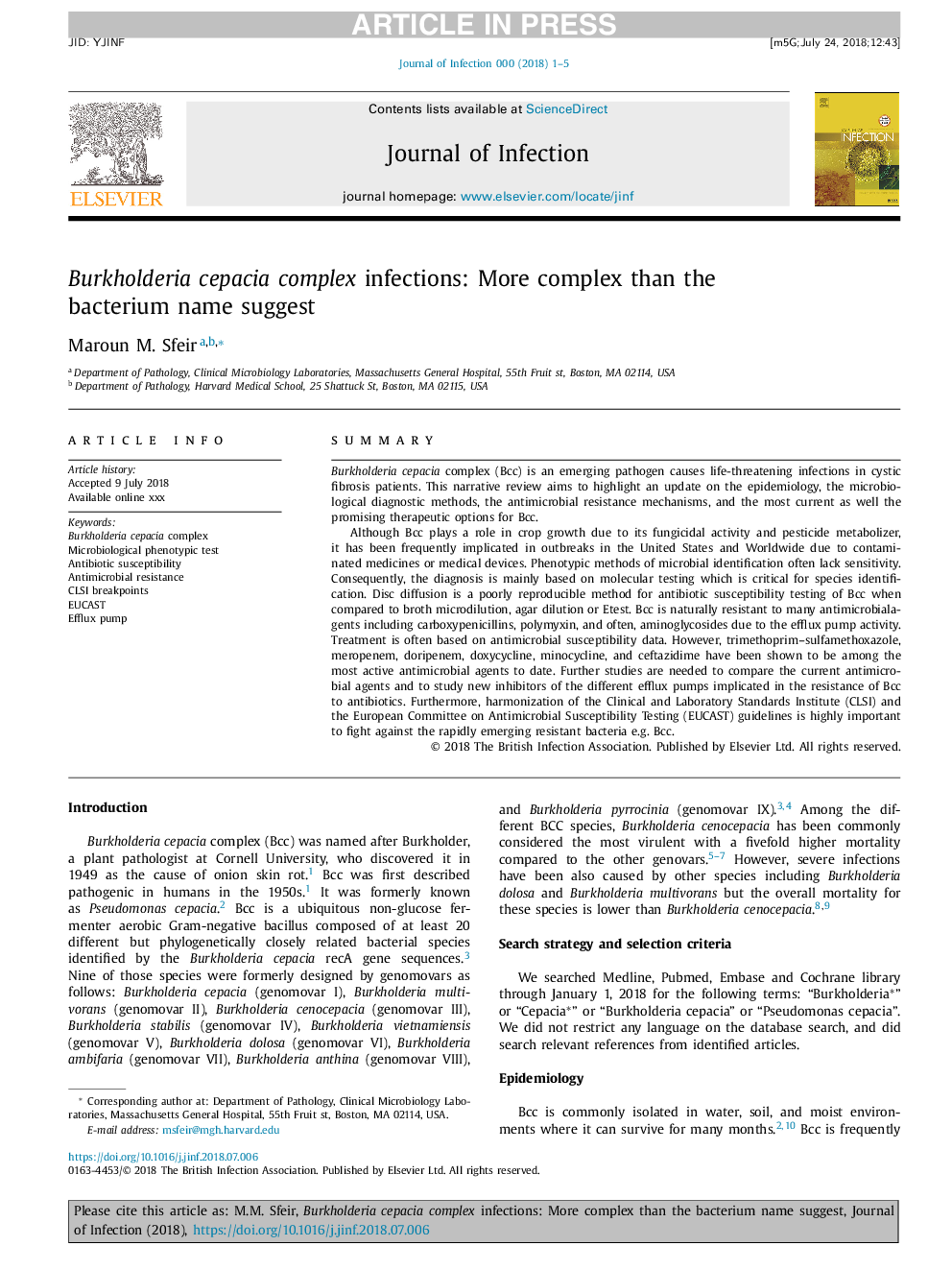| Article ID | Journal | Published Year | Pages | File Type |
|---|---|---|---|---|
| 8740325 | Journal of Infection | 2018 | 5 Pages |
Abstract
Although Bcc plays a role in crop growth due to its fungicidal activity and pesticide metabolizer, it has been frequently implicated in outbreaks in the United States and Worldwide due to contaminated medicines or medical devices. Phenotypic methods of microbial identification often lack sensitivity. Consequently, the diagnosis is mainly based on molecular testing which is critical for species identification. Disc diffusion is a poorly reproducible method for antibiotic susceptibility testing of Bcc when compared to broth microdilution, agar dilution or Etest. Bcc is naturally resistant to many antimicrobialagents including carboxypenicillins, polymyxin, and often, aminoglycosides due to the efflux pump activity. Treatment is often based on antimicrobial susceptibility data. However, trimethoprim-sulfamethoxazole, meropenem, doripenem, doxycycline, minocycline, and ceftazidime have been shown to be among the most active antimicrobial agents to date. Further studies are needed to compare the current antimicrobial agents and to study new inhibitors of the different efflux pumps implicated in the resistance of Bcc to antibiotics. Furthermore, harmonization of the Clinical and Laboratory Standards Institute (CLSI) and the European Committee on Antimicrobial Susceptibility Testing (EUCAST) guidelines is highly important to fight against the rapidly emerging resistant bacteria e.g. Bcc.
Keywords
Related Topics
Life Sciences
Immunology and Microbiology
Applied Microbiology and Biotechnology
Authors
Maroun M. Sfeir,
